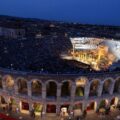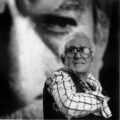“Not to the Scrovegna loneliness, / oh Padua, in that white happy April / I came looking for the art Beatrice / of Giotto that draws the spirits; / nor the masculine virtue of Andrea Mantegna, / that the bronze wolf had as nurse, / I was shaken; nor the strength of the Empress / of the Commander that the holy place reigns. / But in your soft meadow, shaded with elms / and marbles, which encircles the Riviera / and the swallows roar with shrieks, / all my thoughts were filled / with love and my senses of spring, / as in a flap of the Garden of Armida.”
Gabriele D’Annunzio (1863-1938)
Padua and its beauties in the presence of UNESCO. Padova Urbs Picta. We are waiting, in July, for the official proclamation and our city will be officially enrolled in the World Heritage List of UNESCO. The new Italian Cultural Heritage is in Padua: an ambitious enterprise that combines eight places with frescoes of 1300s in the Padua. A unique cultural route just a few minutes far from the AbanoRitz.
Scrovegni Chapel, frescoed by Giotto between 1303 and 1305: a masterpiece of Italian and European painting in the historic center of Padua. Commissioned by Enrico Scrovegni, a wealthy merchant from Padua, who thus seeks to rehabilitate the image of the family and to save his father, usurer, from the pains of purgatory (or worse).
Church of the Saints Filippo and Giacomo to the Eremitani, frescoed by Guariento di Arpo and Giusto de’ Menabuoi, in the fourteenth century it was known as the most decorated and coloured church by frescoes.
Palazzo della Ragione, the court in medieval era and the wider and more articulated painted surface of the cycle: more than three-hundred scenes divided into two levels. In the upper part, dating back to the fifteenth century, we find the signs of the zodiac, the months, the crafts and the human characters; in the lower area, of the fourteenth century, there are scenes in relation to the images above and made according to the use of the part of the room (which we remember being a court).
Chapel of the Carrarese Palace, part of the Carrarese Palace, now headquarter of the Galilean Academy of Sciences, Letters and Arts. Guariento, the court painter, decorates the chapel exalting the power of the Signoria Carrarese for whoever visited it.
Baptistery of the Cathedral, the greatest masterpiece of Giusto de’ Menabuoi focused on the History of Salvation. The fresco fills every minimum surface space and the episodes do not end with the end of the wall, but they continue on a pillar or on the perpendicular wall. This also creates to include unusual architectural spaces.
Basilica and Convent of the Saint, the first evidence of Giotto in Padua. But also Giusto de’ Menabuoi, Altichiero da Zevio, Jacopo Avanzi and Jacopo da Verona: the greatest exponents of painting of the fourteenth century keep here the history of their commissioning in Padua.
Oratory of Saint Giorgio, with internal walls completely decorated by Altichiero da Zevio, with the collaboration of Jacopo da Verona, about the life of Christ and the patron saints of the Lupi family.
Oratory of Saint Michele, commissioned to Jacopo da Verona, after the success of its collaboration with Altichiero da Zevio at the Oratory of Saint Giorgio. The Oratory of Saint Michele presents a cycle of frescoes with five episodes from the stories of the Life of the Virgin.
We wait for you to discover these uniqueness a few minutes far from the AbanoRitz. The concierge of the hotel is ready to welcome you with different proposals of visits, different itineraries and different excursions.











